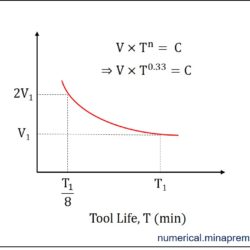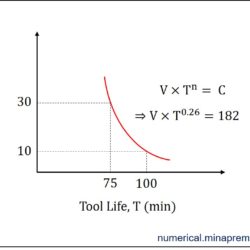Calculate change in the tool life if cutting speed is reduced by 50%
Question: In a single point turning operation with cemented carbide tool and steel work piece, it is found that the Taylor’s exponent is 0.25. If the cutting speed is reduced by 50% then what will be the change in the tool life? [GATE 2016] This problem related to the tool life in single point turning operation can be solved using the Taylor’s Tool Life equation. The well-known Taylor’s Tool Life


